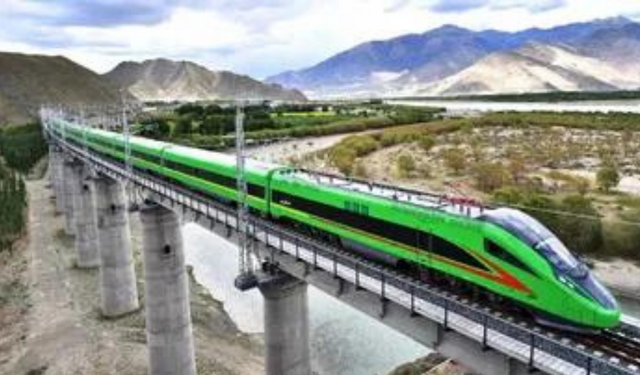Lhasa: China has started work on a new railway line between Xinjiang and Tibet that is expected to raise the hackles of the Indian government. The proposed railway line, which is expected to enable faster deployment of the People’s Liberation Army (PLA), will run through the disputed Aksai Chin region close to the Line of Actual Control with India, though on the Chinese side. This was announced by authorities of the Tibet Autonomous Region (TAR) who have released the plans for the new railway line. The ambitious plans, which were announced last week, propose a “medium to long term railway plan” to almost triple the coverage of the TAR rail network to 4,000 km from the current 1,400 km by 2025. It will include new routes that will go to China’s disputed borders with India and Nepal. “By 2025, the construction of several railway projects, including the Ya’an-Nyingchi section of the Sichuan-Tibet Railway, the Shigatse-Pakhuktso section of the Xinjiang-Tibet Railway, and the Bomi-Ra’uk section of the Yunnan-Tibet Railway will all see major progress,” a report by China’s state-controlled media said quoting the plan. “Improvements to the regional railway network will be of great significance in promoting socioeconomic development and safeguarding national security,” the report added.
Aksai Chin rail may increase India, China LAC tension
The most ambitious of these new routes is the railway line connecting Xinjiang and Tibet. This is expected to broadly run along the course of the G219 national highway through Aksai Chin. The construction of this highway had led to tensions between India and China ahead of the 1962 war. If and when China completes the construction of the railway link between Xinjiang and Tibet through Aksai Chin, it will enable the People’s Liberation Army (PLA) to rush troops faster to the LAC, which may pose a headache for India. Although India has initiated a massive build-up of infrastructure along the LAC with China in recent years, the Indian Army is still at a considerable disadvantage vis-à-vis China in this respect.
Aksai Chin railway will run close to LAC
The proposed new railway line will start in the Shigatse region of Tibet. From there, it will run north-west along Tibet’s border with Nepal. It will then turning north, passing through Aksai Chin before ending at Hotan in China’s Xinjiang province. More worryingly for India, the planned route is designed right next to the Chinese side of the Pangong Tso. A bloody clash had taken place between the Indian Army and the PLA on the banks of the Pangong Tso during the military stand off between India and CHina in May 2020. The first section of the new railway line being built by China is planned to be completed by 2025. The rest of the railway line till Hotan is schedule to be completed by 2035.
India developing LAC infrastructure
India has initiated several infrastructure projects along the LAC, which gained pace since the start of the military standoff between the Indian Army and the PLA of China. The top brass of the Indian military as well as India’s political leadership have asserted that the situation is no longer the same as during the 1962 war with China. Better roads, bridges and tunnels has boosted the ability of the Indian Army to move troops and weapon platforms to remote regions along the LAC. “We have adequate forces along the LAC and in the reserves as well. Our army is fully ready and capable of responding if the need arises,” Indian Army chief General Manoj Pande had told the media on January 12, ahead of the 47th Army Day (January 15). According to data released by the Indian government, India has developed around 2,100 km of road along the LAC with China over the last five years. This has led to a big improvement in the Indian Army’s ability to rush supplies and reinforcement to far flung border posts. In the past three years, the Indian government has spent more than Rs 1,300 crore on developing infrastructure in Ladakh alone. Read all the Latest News , Trending News , Cricket News , Bollywood News , India News and Entertainment News here. Follow us on Facebook , Twitter and Instagram .
)